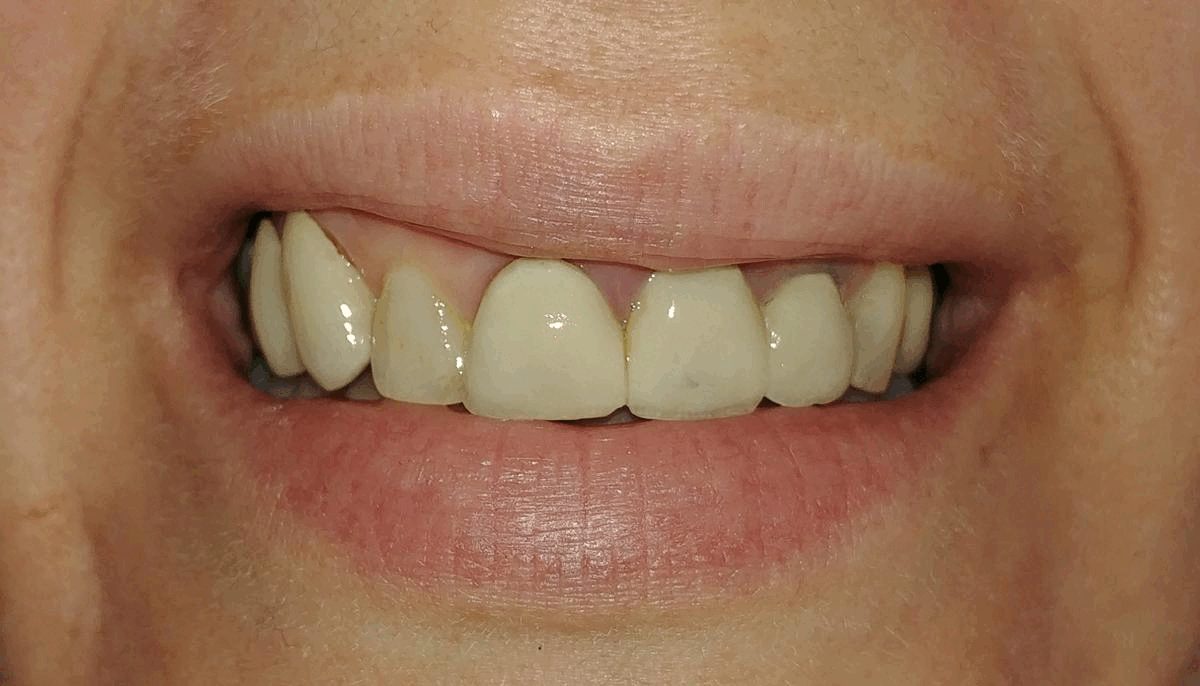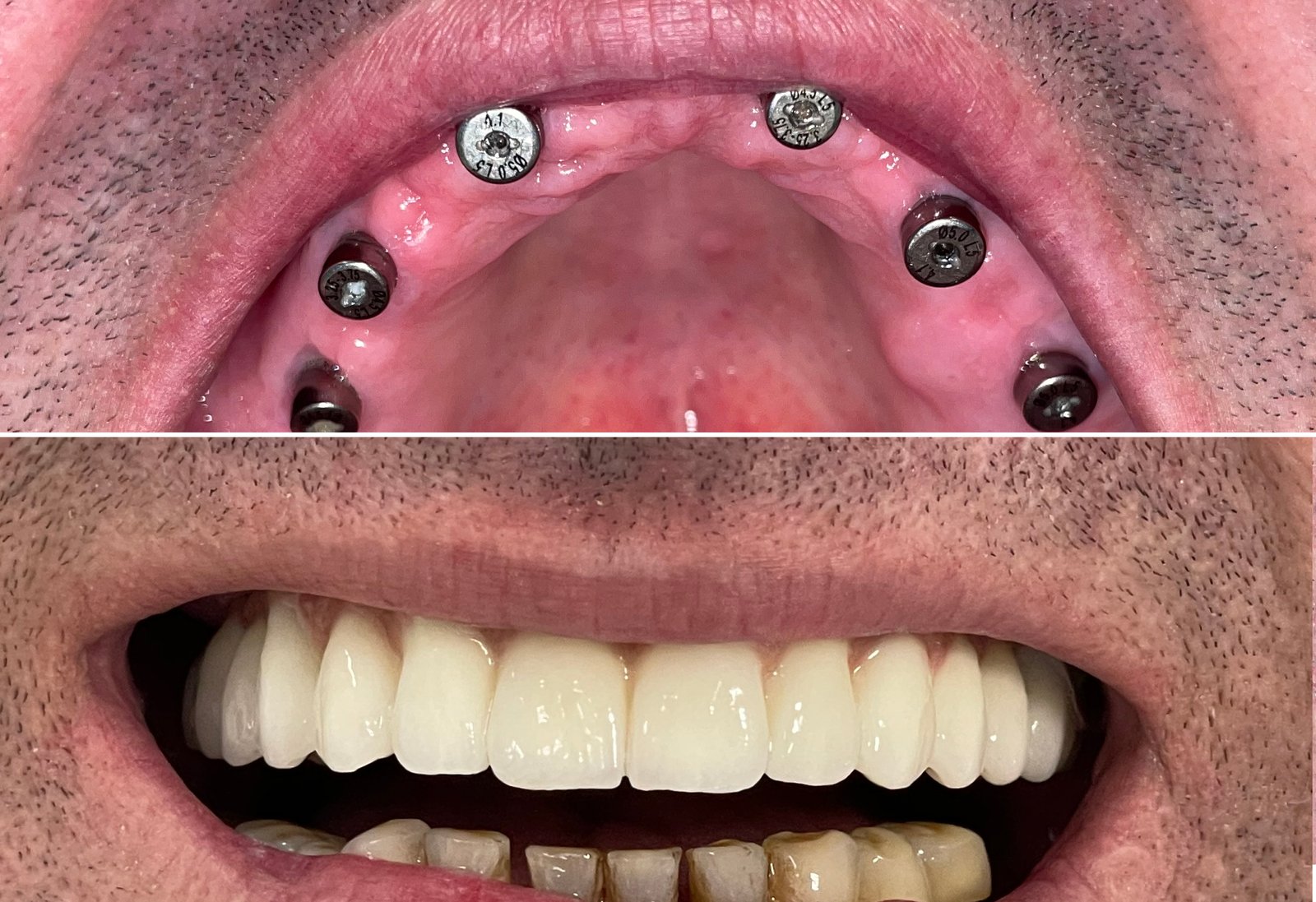Dental treatment
Dental treatment is a fundamental part of our vision at Dental Center Sarajevo. An unmatched team of specialists will transform your smile forever.
Dental treatment is a fundamental part of our vision at Dental Center Sarajevo. An unmatched team of specialists will transform your smile forever.
Dental Center SarajevoDental treatment in our case is a delicate and strictly professional process, with an aim to give you the perfect smile you have always wanted.
Dental implants are biocompatible prostheses made of titanium, which are surgically implanted in the bone and mimic the root of the tooth.
Dental crowns or fillings are a type of fixed prosthetic replacement that reconstructs the crown of a natural tooth.
Indications for implant placement are lack of one tooth, multiple teeth or all teeth. The conditions for implant placement are good and healthy bone that is analyzed by 3D CBCT imaging.
In case of bone deficiency, there are the following solutions: PRF treatment in combination with own and artificial bone, sinus lift surgical treatment.
The implant is surgically implanted in the bone, the implantation process lasts 20-40 minutes per implant, surgical sutures are placed, which are removed in 7-10 days. After the surgery, the process of osseointegration of the implant begins (fusion of the bone and the implant for the implant to be fully functional). The process of osseointegration lasts 4-6 months. With the completion of osseointegration, the first phase of implant placement was completed. After 4-6 months, patients come to the office to continue therapy.
After the process of osseointegration, the gingiva of the former is placed on the implant for 7-10 days to shape the gums around the implant. Impressions are taken and superstructures (abutments) are made for dental restoration. Making a replacement takes 5-10 days. The replacement can be a prosthesis, a bridge or a crown - depending on the patient's wishes. The most popular are zircon ceramic crowns that perfectly mimic a natural tooth.
Dental crowns or fillings are a type of fixed prosthetic replacement that reconstructs the crown of a natural tooth.
A bridge is a restoration used to replace teeth by joining an artificial tooth to adjacent teeth or dental implants.
Dentures are prosthetic devices made to replace missing teeth and supported by surrounding tissues of the oral cavity.
Grinding teeth to make a crown means reducing the volume of tooth mass so that there is room to make an artificial ceramic crown that will fully function functionally and aesthetically after cementation on the tooth. In the same visit, after grinding, prints of your in mouth situation are taken and an aesthetically acceptable makeshift crown is made. The impression is sent to the dental laboratory where the crown will be made.
On the next visit, the finished crown is tested, if you are satisfied with it, it is immediately cemented. If there is a need for correction, it is returned for finishing in the dental laboratory.
When the lab gets an imprint it starts with designing your teeth and smile. As a result of their work, we get temporary crowns as a simulation of the future shape of your teeth. The lab takes one to five days, which is the period until your future arrival at the office.
During this visit, we will try temporary crowns that simulate future teeth. In this way we have together (therapist and patient) the opportunity to experience a possible look, to comment on whether we like or would like to change something. This will take 20 to 45 minutes. Sometimes, in simpler words, this phase is not even necessary.
Then again there is a period of one to five days in which the laboratory makes your future crowns in the same shape as they were during the simulation. Production of ceramic crowns with CAD-CAM technology and final production of crowns.
The third and final step is the step in which the crown is permanently fixed. This visit lasts from 20 to 90 minutes and after that, you have a quality and long-lasting solution for a more beautiful smile.
The crown (or crowns, if we make more than one) is cemented when you are completely satisfied with it.
How long does the process of making a crown take and how long do you need to come to the dental practice?
The duration of the whole process of making crowns from grinding to their cementation takes about 10 days on average, but if necessary, they can be completed in 4 to 5 days. During this time you need to come 2 to 3 times to the dental office.
- Do not eat for an hour after cementing the crowns
- When the anaesthesia subsides, mild pain and hypersensitivity to thermal stimuli (hot, cold) are possible. This sensitivity is normal and usually disappears after one to two weeks.
- Follow proper oral hygiene, use soft brush and gently massage the gums
- A few days after cementation, it is recommended to pay extra attention to the care of the gums (eg: use Gengigel). Feel free to floss.
Approximately seven days after the cementation of the crowns, a check-up is required. It is extremely important to determine e.g. possible premature contacts in the bite or sliding movements, due to soft tissue response, due to possibly still present sensitivity and toothache and the like.
It is important to strictly follow the instructions of your dentist to make your crowns last as long as possible.
FEATURED
Today we prefer crowns made of metal-free ceramics due to their biocompatibility and aesthetic superiority. Zircon – ceramic is one of the latest materials for the production of prosthetic replacements used in dentistry. If we talk about the most important criteria that crowns need to meet when restoring teeth, then these are biocompatibilities, functionality and aesthetics. Zircon – ceramics provide all three. Metal-free ceramics are made with computer technology (CAD / CAM), which achieves superior precision. In the case of metal-free ceramic crowns, the possibility of the appearance of dark edges is sometimes avoided, which is sometimes encountered in metal-ceramic crowns (due to the edge screening of the material).
They do not have the possibility of corrosion and release of metal particles. Zircon ceramic crowns are of excellent strength and breakage resistance. Because of their white colour, they transmit light in a way that best mimics our natural teeth and their transparency, thus ensuring superior aesthetics in terms of tooth appearance, because with zircon-ceramic crowns you will not notice whether they are real natural teeth or crowns, but only a bright smile…





| Cookie | Duration | Description |
|---|---|---|
| cookielawinfo-checkbox-analytics | 11 months | This cookie is set by GDPR Cookie Consent plugin. The cookie is used to store the user consent for the cookies in the category "Analytics". |
| cookielawinfo-checkbox-functional | 11 months | The cookie is set by GDPR cookie consent to record the user consent for the cookies in the category "Functional". |
| cookielawinfo-checkbox-necessary | 11 months | This cookie is set by GDPR Cookie Consent plugin. The cookies is used to store the user consent for the cookies in the category "Necessary". |
| cookielawinfo-checkbox-others | 11 months | This cookie is set by GDPR Cookie Consent plugin. The cookie is used to store the user consent for the cookies in the category "Other. |
| cookielawinfo-checkbox-performance | 11 months | This cookie is set by GDPR Cookie Consent plugin. The cookie is used to store the user consent for the cookies in the category "Performance". |
| viewed_cookie_policy | 11 months | The cookie is set by the GDPR Cookie Consent plugin and is used to store whether or not user has consented to the use of cookies. It does not store any personal data. |